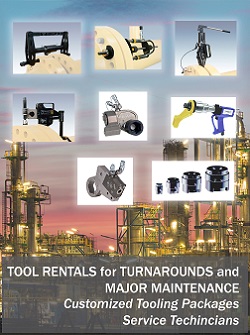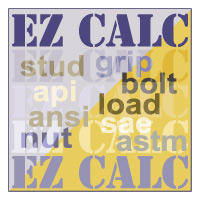Who Cares about Safety
Enerteq’s contribution towards creating a Culture of Safety, Part 1
The good news, everybody does. The bad news, often, not enough.
< back to SAFETY CULTURE main page
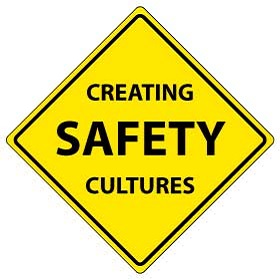 After repeated studies by organizations and academics, the consensus reached is that safety must be part of the culture of an organization to permanently lower incidents. This leads to many questions, but for leaders of organizations, it also points the way to tackling the changes needed. Enerteq’s vantage point is flange work during maintenance and turnarounds.
After repeated studies by organizations and academics, the consensus reached is that safety must be part of the culture of an organization to permanently lower incidents. This leads to many questions, but for leaders of organizations, it also points the way to tackling the changes needed. Enerteq’s vantage point is flange work during maintenance and turnarounds.
Over the last few years, Enerteq has collaborated with Equalizer International, an engineering and tool design company, to market solutions that have completely revolutionized the safety and efficiency profile of servicing and maintaining flanges. Therefore, the acceptance of Equalizer’s technology can serve as an indicator of the level of commitment to safety present in an organization’s leadership.
How do we measure an organization’s commitment to safety?
Nowhere is safety more crucial than in the maintenance departments of a plant or refinery. Maintenance crews work around the clock with dangerous materials, under pressure and under deadlines. In this environment, how maintenance is supported and funded, is a very good metric of the organization’s commitment to safety.
For Enerteq, as an international distributor of Equalizer tools, and advocates of Best Practices Technologies, we see the full spectrum of companies’ commitment to safety. No doubt, the worst cases of companies lacking a committed safety culture are in international locations but unfortunately, too many plants in the U.S. are also far behind. The plants making the best progress are those where leadership has made a companywide decision to develop a Safety Culture. Where the leadership has not taken ownership of safety we see inconsistent attempts and persistent problems. For these companies the news headlines serve as performance metrics.
Promoting Equalizer’s technology has given Enerteq a unique understanding of what it takes to develop a Safety Culture. The tools bring immediate solutions to very hazardous tasks. Yet, as revolutionary as Equalizer’s technologies are to safety, we are constantly faced with severe resistance from entrenched cultures, and it is the reason leaders and managers have a role in bringing about change.
Individuals of these cultures have been doing their jobs the same way for generations. They are artisans from traditional backgrounds, whose basic mission is to keep production going around the clock. Their skills allow them to understand the benefits of what we offer, but the depth of their culture prevents them from carrying out the motivation to change their behaviors. To make matters worse, flange work suffers from a lack of advocacy even though it has been at the root of some of the most serious accidents in Houston as well as other processing complexes around the world. The craft of flange work is sadly neglected.
Therefore, change remains the challenge to the managers and leadership; it is in their hands to help orchestrate the acceptance of new ideas and behaviors in carrying out the tasks. Without the proactive involvement of a company’s leadership in developing a Safety Culture, its policies are always going to appear to prioritize profits over people’s welfare.
Leaders and managers of any processing facility need to believe that a Safety Culture brings about not only safer practices and fewer accidents, but, by its nature it also increases profits, and improves a company’s image.
Enerteq has developed a framework to help managers take a proactive approach towards developing a Safety Culture within their company. We start by separating our Safety Culture model into defined components and linking those components to specific departments within a company. Linking these components and departments together gives concreteness and usability to the model.
Three Legged Stool - the Components of a Safety Culture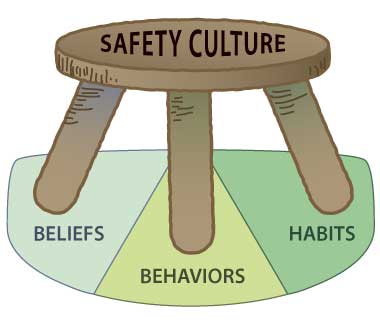
Based on observations we developed the Three Legged Stool metaphor. It is a way to illustrate what a culture and particularly a Safety Culture needs to sustain itself into the future. A culture must be on strong legs to last. In an organization the legs are its Beliefs, Behaviors and Habits.
If any of these three elements is missing, the culture is not supported and it gradually collapses. Safety incidents will persist and worsen, eroding a company’s profit and reputation.
Linking the legs to Departments
Building on our three-point framework, we can extend its imagery to an Equilateral Triangle formed by the footprint of the stool. The three points represent the three agents (departments to engage with) for change. They are Maintenance, Safety and Training, their interactions, represented by the arrows, reflect the formation and continuance of a company’s Safety Culture.
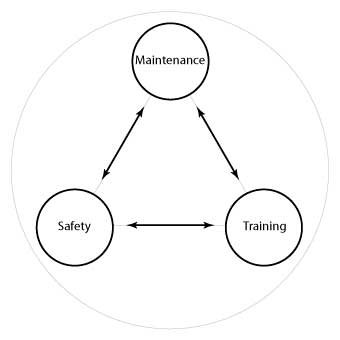
Research has shown that focusing on Beliefs, Habits patterns, behavior changes permanently over time. Similarly, leaders can manage the dynamic between Maintenance, Safety and Training, to move and gradually change the company’s culture towards a safer and more prosperous outcome.
Stay tuned. Our next Safety article will focus on Building BELIEFS for a Safety Culture.









